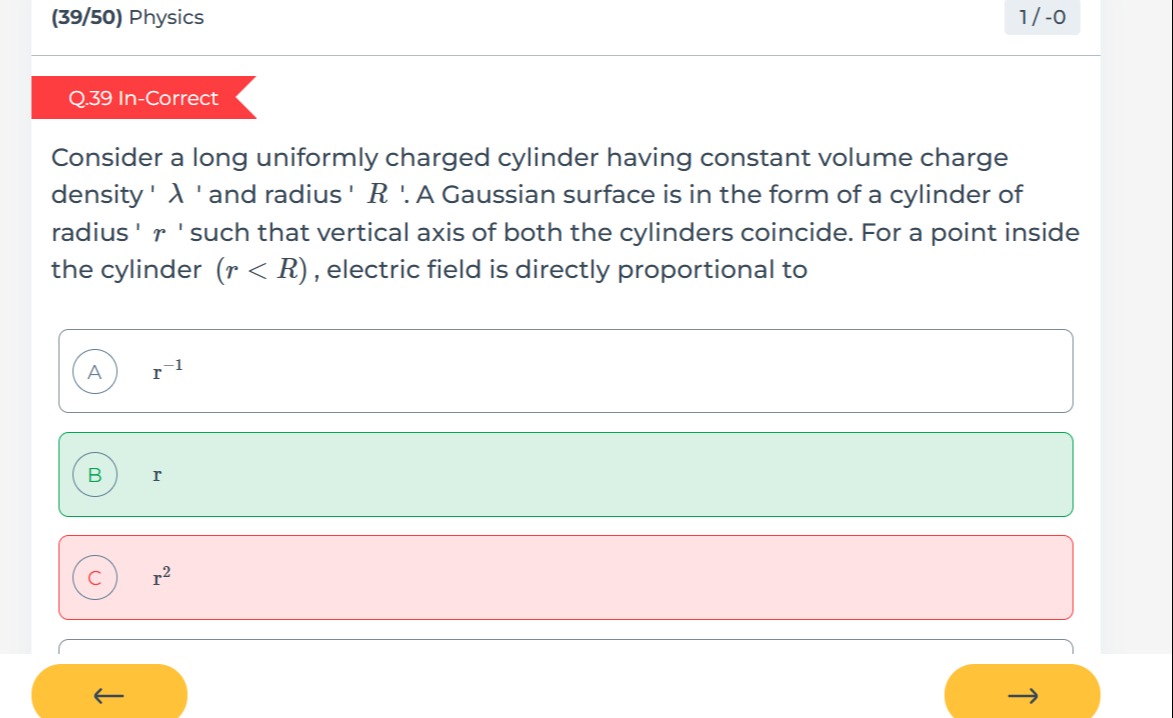Question
Question: Consider a long uniformly charged cylinder having constant volume charge density '$\lambda$' and rad...
Consider a long uniformly charged cylinder having constant volume charge density 'λ' and radius 'R'. A Gaussian surface is in the form of a cylinder of radius 'r' such that vertical axis of both the cylinders coincide. For a point inside the cylinder (r<R), electric field is directly proportional to

A
r−1
B
r
C
r2
Answer
r
Explanation
Solution
For a uniformly charged cylinder with volume charge density ρ, consider a Gaussian cylindrical surface of radius r (< R) and length L. The enclosed charge is
Qenc=ρ⋅πr2L.
By Gauss’s law,
E⋅(2πrL)=ε0Qenc=ε0ρπr2L.
Solving for E,
E=2ε0ρr.
Thus, for points inside the cylinder, the electric field is directly proportional to r.
